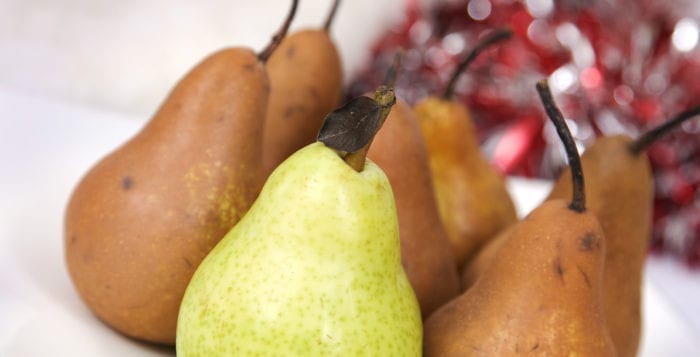By David Dunaief, M.D.
Stroke remains one of the top five causes of mortality and morbidity in the United States (1). As a result, we have a wealth of studies that inform us on issues ranging from identifying chronic diseases that increase stroke risk to examining the roles of medications and lifestyle in managing risk.
Impact of chronic diseases
There are several studies that show chronic diseases — such as age-related macular degeneration, rheumatoid arthritis and migraine with aura — increase the risk for stroke. Therefore, patients with these diseases must be monitored.
In the ARIC study, stroke risk was approximately 50 percent greater in patients who had AMD compared to those who did not — 7.6 percent versus 4.9 percent, respectively (2). This increase was seen in both types of stroke: ischemic (complete blockage of blood flow in the brain) and hemorrhagic (bleeding in the brain). The risk was greater for hemorrhagic stroke than for ischemic, 2.64 vs. 1.42 times increased risk.
However, there was a smaller overall number of hemorrhagic strokes, which may have skewed the results. This was a 13-year observational study involving 591 patients, ages 45 to 64, who were diagnosed with AMD. Most patients had early AMD. If you have AMD, you should be followed closely by both an ophthalmologist and a primary care physician.
Rheumatoid arthritis (RA)
In an observational study, patients with RA had a 30 percent increased risk of stroke, and those under 50 years old with RA had a threefold elevated risk (3). This study involved 18,247 patients followed for a 13-year period. There was also a 40 percent increased risk of atrial fibrillation (AF), a type of arrhythmia or irregular heartbeat. Generally, AF causes increased stroke risk; however, the authors were not sure if AF contributed to the increased risk of stroke seen here. They suggested checking regularly for AF in RA patients, and they surmised that inflammation may be an underlying cause for the higher number of stroke events.
Migraine with aura
In the Women’s Health Study, an observational study, the risk of stroke increased twofold in women who had migraine with aura (4). Only about 20 percent of migraines include an aura, and the incidence of stroke in this population is still rather rare, so put this in context (5).
Medications with beneficial effects
Two medications have shown positive impacts on reducing stroke risk: statins and valsartan. Statins are used to lower cholesterol and inflammation, and valsartan is used to treat high blood pressure. Statins do have side effects, such as increased risks of diabetes, cognitive impairment and myopathy (muscle pain). However, used in the right setting, statins are very effective. In one study, there was reduced mortality from stroke in patients who were on statins at the time of the event (6). Patients who were on a statin to treat high cholesterol had an almost sixfold reduction in mortality, compared to those with high cholesterol who were not on therapy.
There was also significant mortality reduction in those on a statin without high cholesterol, but with diabetes or heart disease. The authors surmise that this result might be from an anti-inflammatory effect of the statins. Of course, if you have side effects, you should contact your physician immediately.
Valsartan is an angiotensin II receptor blocker that works on the kidney to reduce blood pressure. However, in the post-hoc analysis (looking back at a completed trial) of the Kyoto Heart Study data, valsartan used as an add-on to other blood pressure medications showed a significant reduction, 41 percent, in the risk of stroke and other cardiovascular events for patients who have coronary artery disease (7).
It is important to recognize that chronic disease increases stroke risk. High blood pressure and high cholesterol are two of the most significant risk factors. Fortunately, statins can reduce cholesterol, and valsartan may be a valuable add-on to prevent stroke in those patients with coronary artery disease.
Medication combination: negative impact
There are two anti-platelet medications that are sometimes given together in the hopes of reducing stroke recurrence — aspirin and Plavix (clopidogrel). The assumption is that these medications together will work better than either alone. However, in a randomized controlled trial, the gold standard of studies, this combination not only didn’t demonstrate efficacy improvement but significantly increased the risk of major bleed and death (8, 9).
Major bleeding risk was 2.1 percent with the combination versus 1.1 percent with aspirin alone, an almost twofold increase. In addition, there was a 50 percent increased risk of all-cause death with the combination, compared to aspirin alone. Patients were given 325 mg of aspirin and either a placebo or 75 mg of Plavix. The study was halted due to these deleterious effects. The American Heart Association recommends monotherapy for the prevention of recurrent stroke. If you are on this combination of drugs, please consult your physician.
Aspirin: low dose vs. high dose
Greater hemorrhagic (bleed) risk is also a concern with daily aspirin regimens greater than 81 mg, which is the equivalent of a single baby aspirin. Aspirin’s effects are cumulative; therefore, a lower dose is better over the long term. Even 100 mg taken every other day was shown to be effective in trials. There are about 50 million patients who take aspirin chronically in the United States. If these patients all took 325 mg of aspirin per day — an adult dose — it would result in 900,000 major bleeding events per year (10).
Lifestyle modifications
A prospective study of 20,000 participants showed that consuming white fleshy fruits — apples, pears, bananas, etc. — and vegetables — cauliflower, mushrooms, etc. — decreased ischemic stroke risk by 52 percent (11). Additionally, the Nurses’ Health Study showed that foods with flavanones, found mainly in citrus fruits, decreased the risk of ischemic stroke by 19 percent (12). The authors suggest that the reasons for the reduction may have to do with the ability of flavanones to reduce inflammation and/or improve blood vessel function. I mention both of these trials together because of the importance of fruits in prevention of ischemic (clot-based) stroke.
Fiber’s important role
Fiber also plays a key role in reducing the risk of a hemorrhagic stroke. In a study involving over 78,000 women, those who consumed the most fiber had a total stroke risk reduction of 34 percent and a 49 percent risk reduction in hemorrhagic stroke. The type of fiber used in this study was cereal fiber, or fiber from whole grains.
Refined grains, however, increased the risk of hemorrhagic stroke twofold (13). When eating grains, it is important to have whole grains. Read labels carefully, since some products that claim to have whole grains contain unbleached or bleached wheat flour, which is refined.
Fortunately, there are many options to help reduce the risk or the recurrence of a stroke. Ideally, the best option would involve lifestyle modifications. Some patients may need to take statins, even with lifestyle modifications. However, statins’ side effect profile is dose related. Therefore, if you need to take a statin, lifestyle changes may help lower your dose and avoid harsh side effects. Once you have had a stroke, it is likely that you will remain on at least one medication — low-dose aspirin — since the risk of a second stroke is high.
References: (1) cdc.gov. (2) Stroke online April 2012. (3) BMJ 2012; Mar 8;344:e1257. (4) Neurology 2008 Aug 12; 71:505. (5) Neurology. 2009;73(8):576. (6) AAN conference: April 2012. (7) Am J Cardiol 2012; 109(9):1308-1314. (8) ISC 2012; Abstract LB 9-4504; (9) www.clinicaltrials.gov NCT00059306. (10) JAMA 2007;297:2018-2024. (11) Stroke. 2011; 42: 3190-3195. (12) J. Nutr. 2011;141(8):1552-1558. (13) Am J Epidemiol. 2005 Jan 15;161(2):161-169.
Dr. Dunaief is a speaker, author and local lifestyle medicine physician focusing on the integration of medicine, nutrition, fitness and stress management. For further information, visit www.medicalcompassmd.com or consult your personal physician.






